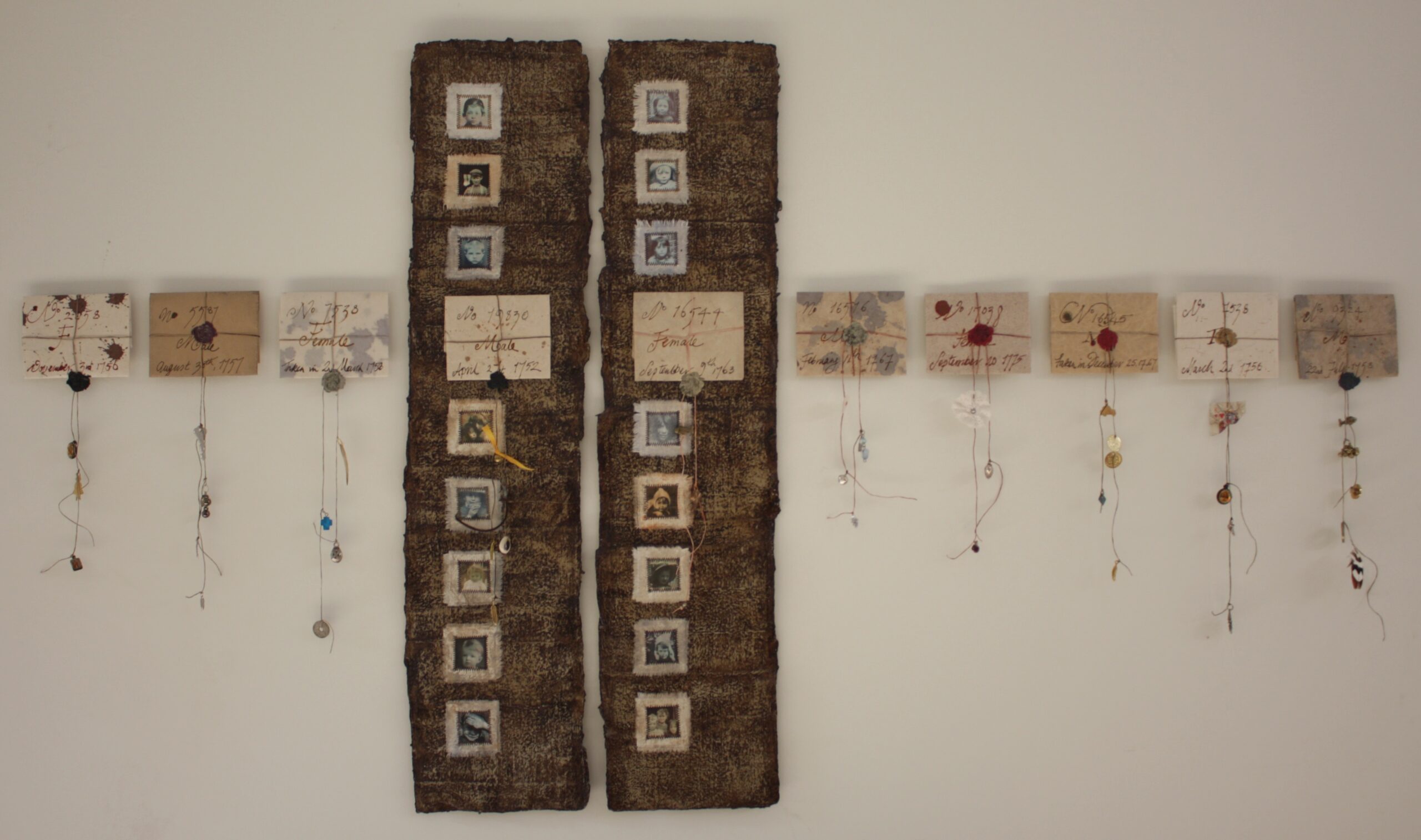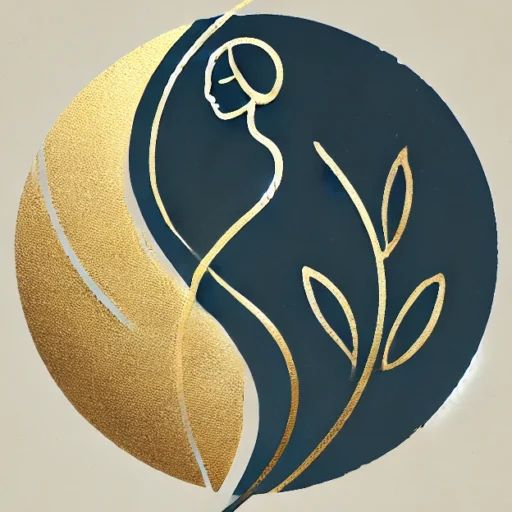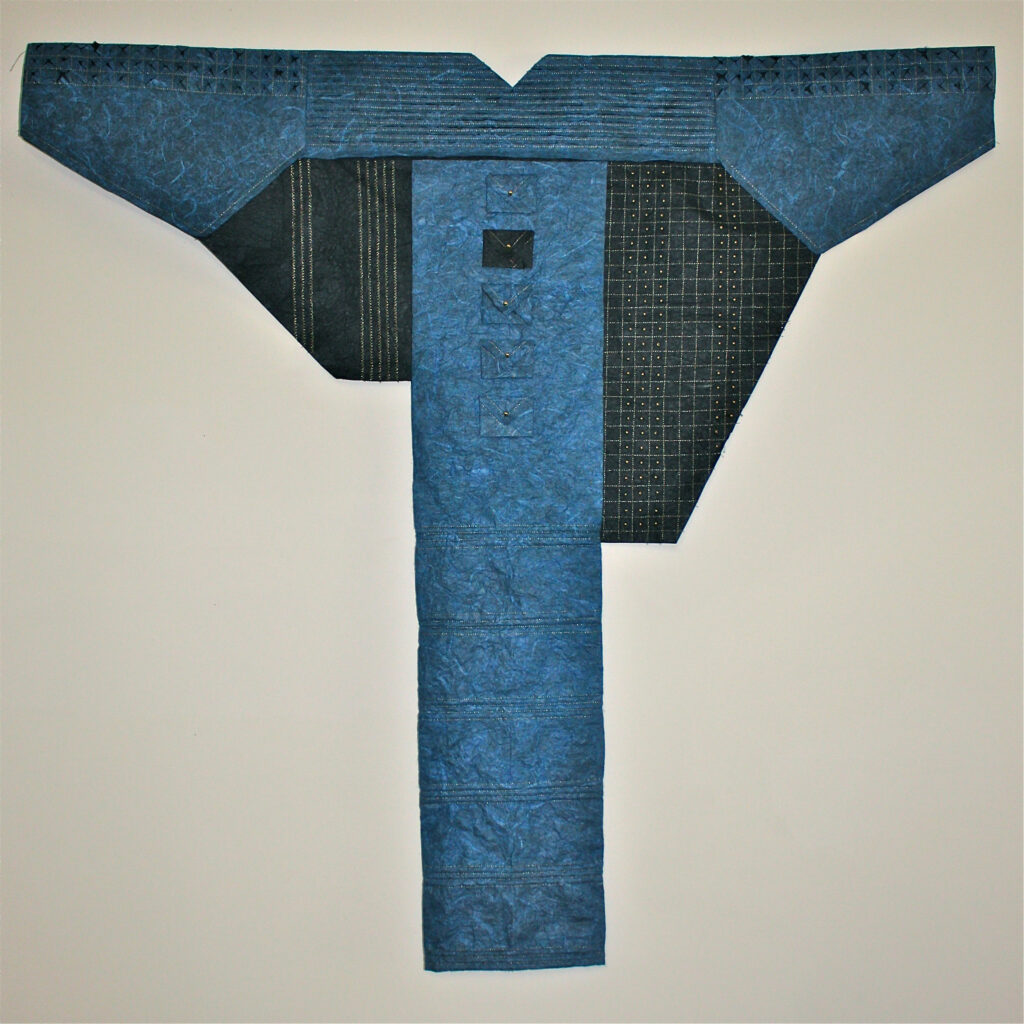
THEME/INSPIRATION: The significance of ceremonial clothing in different cultures, garments designed and adorned, not merely for protecting the body, but to endow the wearer with greater power, magical influence, religious grandeur or superiority of position. This Robe is based on the traditional shape and proportion of the robes of Turkestan, the Caucasus and the talismanic Batakari (woven shirts) of Western Africa. The talismans contained verses from the Koran that gives the power of protection to the wearer.
THEME: Jealously, lack of trust, passion, fear, suspicion, despair and death, the dark side of nature.
INSPIRATION: This piece is part of an ongoing series relating to the “Hand” and its significance in different cultures. The “Hand of Fate”. Lifeline, Heart-line, Headline; a way of predicting the future. The Hand, particularly the open right hand, is a sign in many cultures, of protection that also represents blessings, power, and strength, and is seen as potent in deflecting the evil eye. The hand can be depicted with the fingers spread apart to ward off evil, or closed together to bring good luck.
Gold, in some cultures, is the symbol of truth. Red, symbolizes the life-force – the colour of love and passion. Black represents evil and secrecy – sorrow, misfortune and death.
Desdemona means unfortunate, ill-fated. Forces beyond our control intervene. The hand can be depicted with the fingers spread apart to ward off evil, or closed together to bring good luck. Gold, in some cultures, is the symbol of truth. Red, symbolizes the life-force – the colour of love and passion. Black represents evil and secrecy – sorrow, misfortune and death.
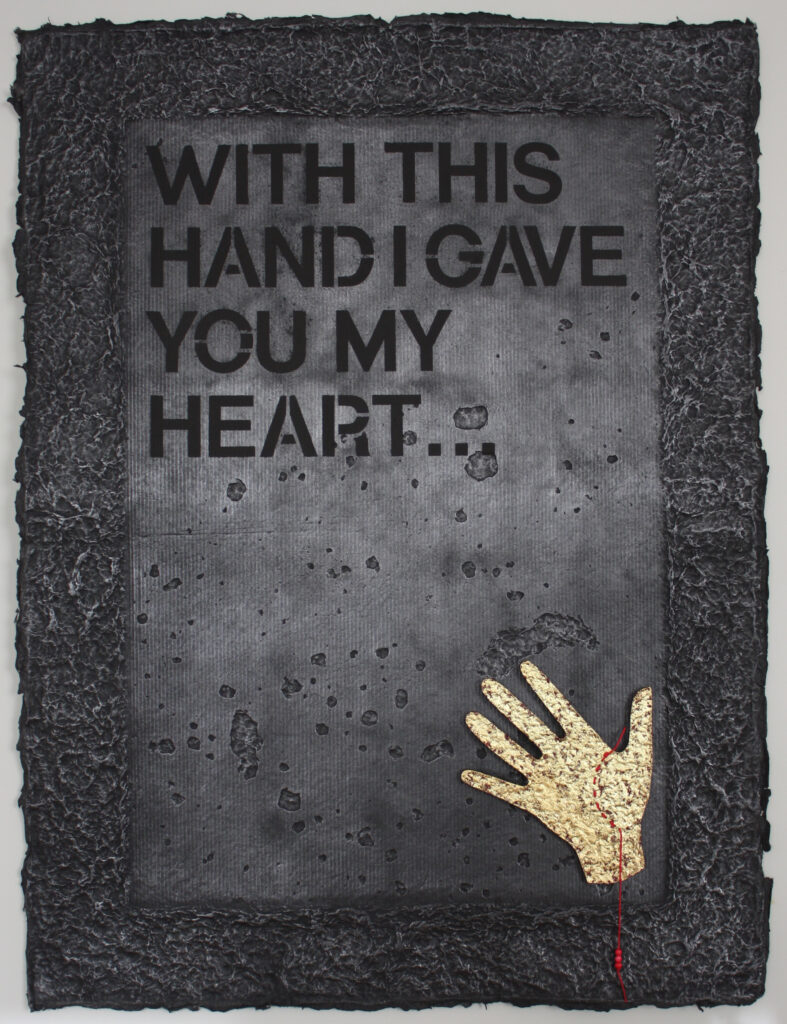
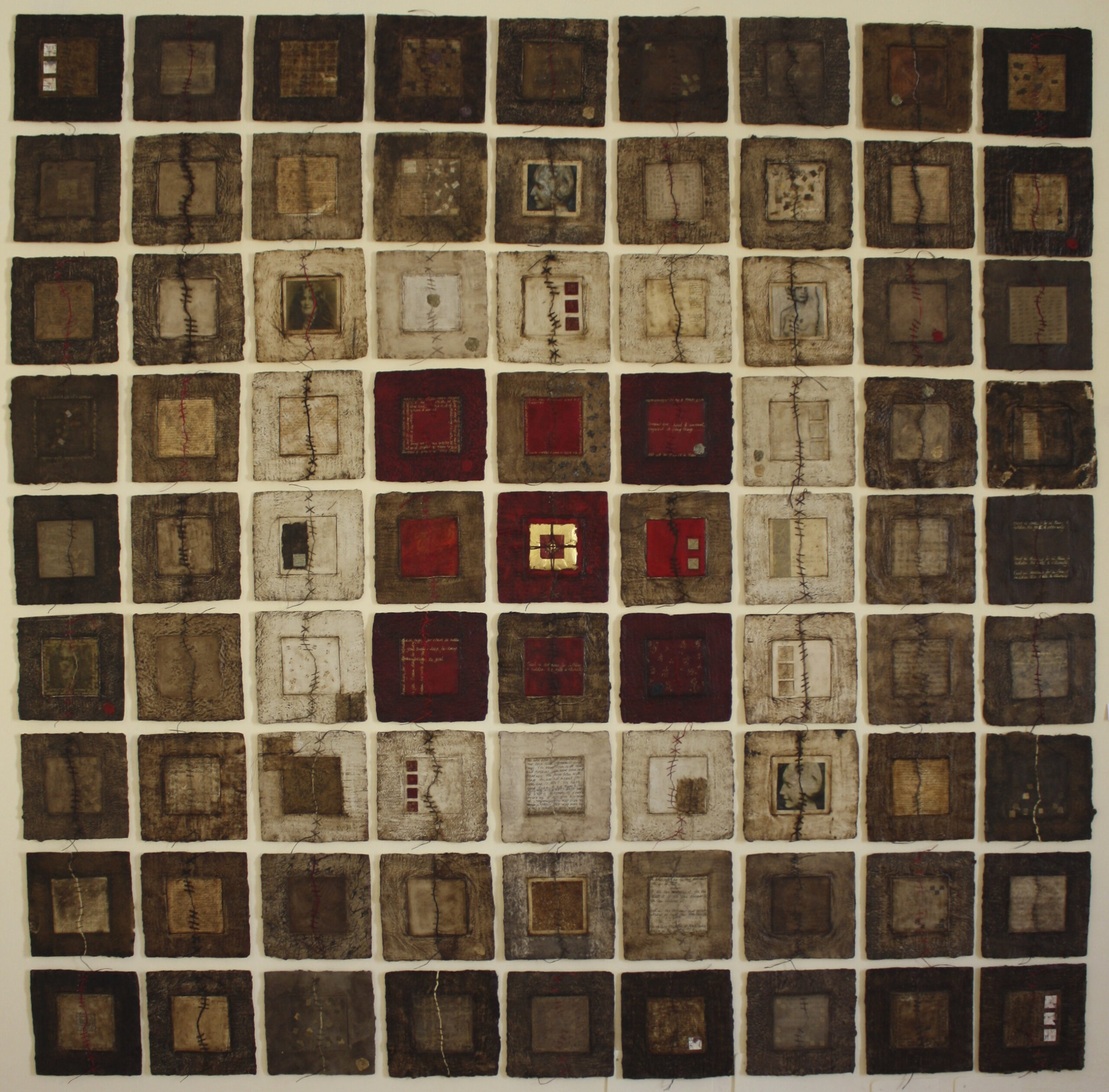
INSPIRATION: The Vedic Square – a 9 box mathematical matrix.
THEME: Ripped, rent, torn, disjointed, broken, disconnected, detached, revealed. Mended, healed, resealed, resolved, fused, lesion, scarred, reconnected, made new.
Our voluntary dreams and aspirations are what inspire us in life. Many will alter, change, falter or die; but we pick up the pieces, fuse them together to create new dreams and carry them with us into the future.
Involuntary dreams are successions of images, ideas, emotions, and sensations that occur involuntarily in the mind during certain stages of sleep. The most common emotion experienced in dreams is anxiety. Other emotions include abandonment, anger, fear, joy, happiness, etc. Negative emotions are much more common than positive ones.
THEME: Traces, echoes, a journey, light to dark/dark to light, contemplation, meditation, mirror image, tangled threads.
INSPIRATION: The act of writing allows societies to transmit information and share knowledge. Asemic writing is a wordless open semantic form of writing – writing as an illegible, abstract and wordless mark making.
The signs and symbols we create in order to communicate – iconographic symbols, mnemonics, graphemes, rebus, alphabets – all marks made on a surface in order to communicate. But these signs and symbols only communicate to someone who understands them or who can interpret these marks – to anyone else they are just unintelligible squiggles.
There are 1.22 metres of Asemic writing in this piece.
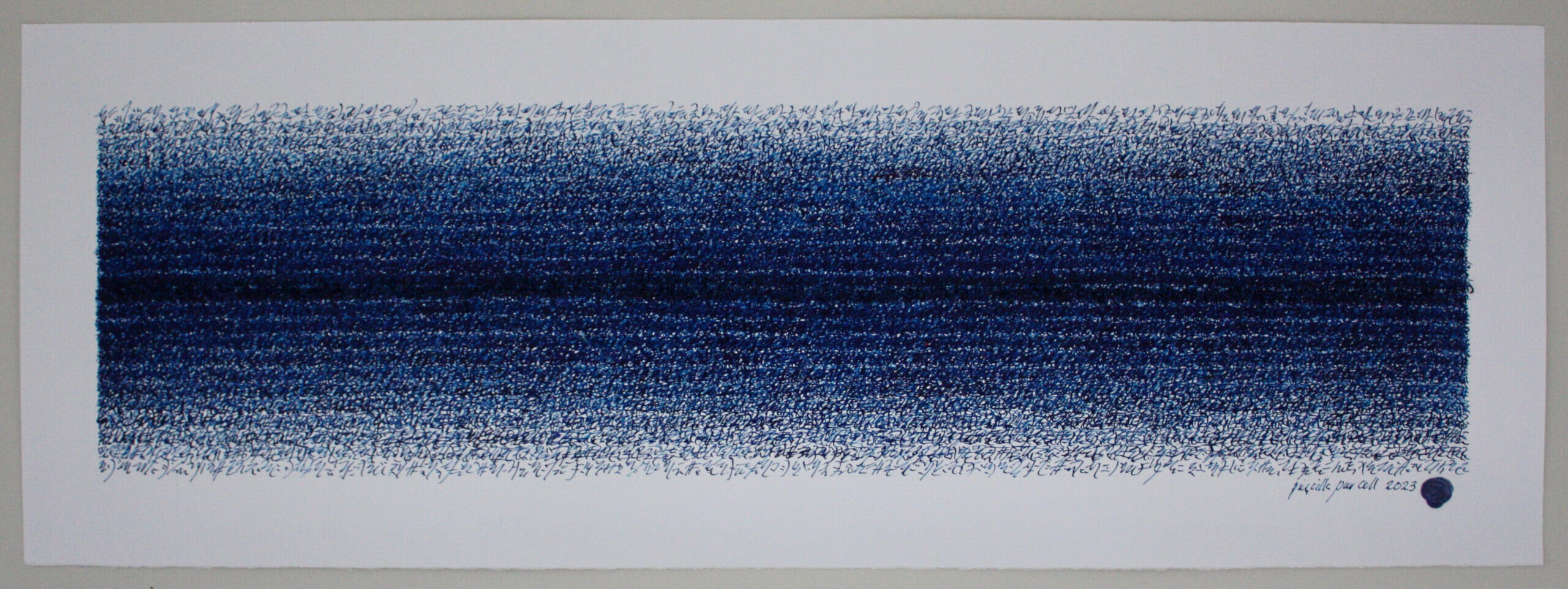
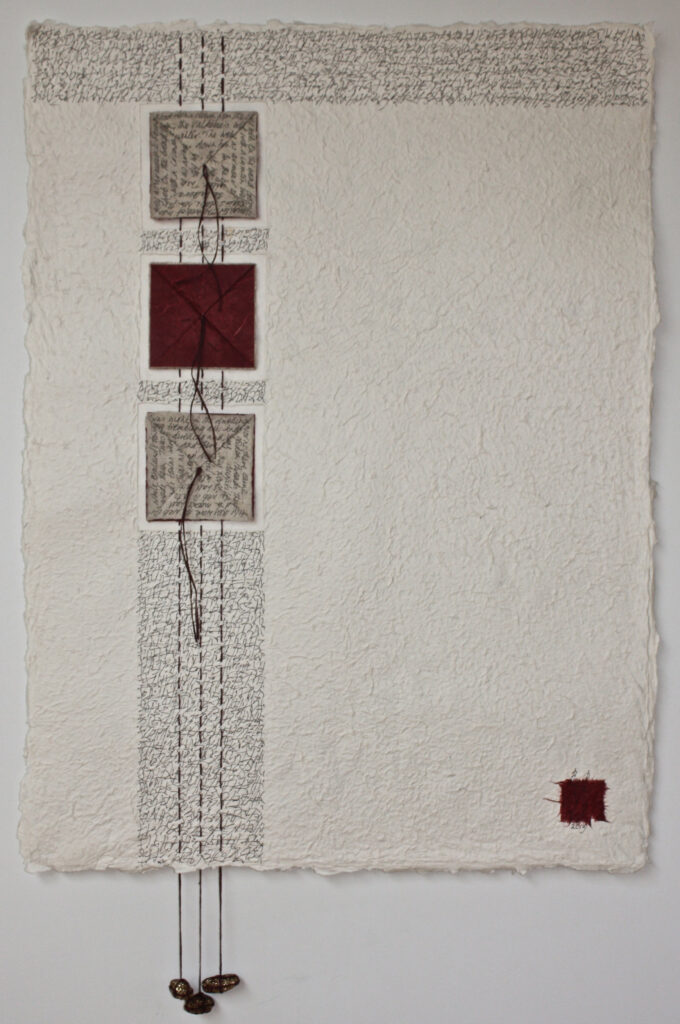
THEME: Myths concerning weaving – Valkyries, Norns, Fates.
Valkyries (chooser of the slain) – a Valkyrie is one of a host of female figures who decide which soldiers die in battle and which live.
Norns: (to twine) – Twining/spinning the thread of fate. Female beings, in Norse mythology, who rule the destiny of Gods and Men. They represent Destiny as it is twined with the flow of Time.
Fates: Their number became fixed at three: CLOTHO (spinner of the thread of life), LACHESIS (measurer of the thread) and ATROPOS (cutter of the thread). They controlled the metaphorical thread of life of every mortal from birth to death.
Squares and Triangles: The square represents stability and lasting perfection – perfection that is static, earthly and material. It stands for order in the universe. The triangle represents the magical number three – it underlies all aspects of creation: mind, body & spirit; past, present & future; birth, life & death.
THEME: Repetition, differences in similarity, subtle change, pattern, rhythm, infinite reinvention.
INSPIRATION: Vedic Square – a 9 box mathematical matrix. The philosophical concept of existing in, and being aware of, the present moment.
Each of these squares was folded by hand, and each one, although similar, is unique with small differences. Each one was created at a different time, with a slightly different section of the paper, an identical and yet slightly different manner of folding, a different bead added.
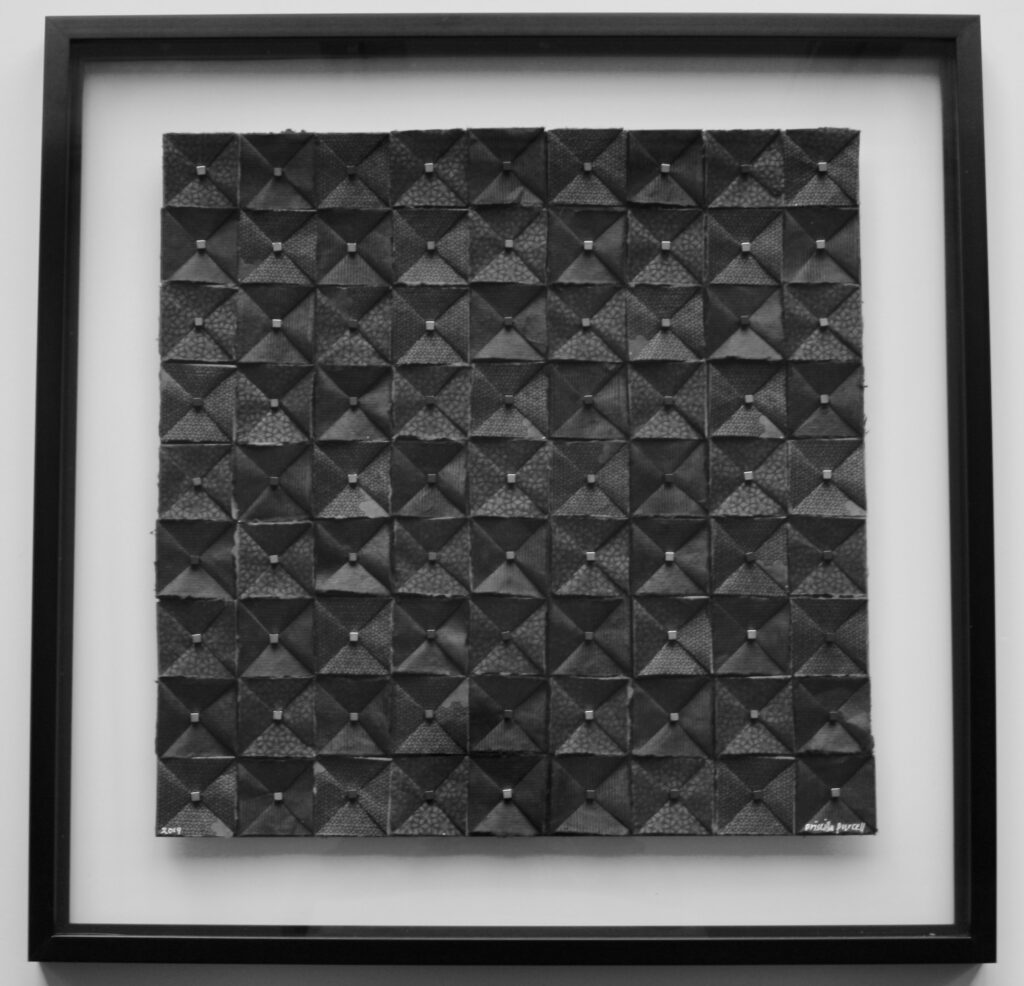
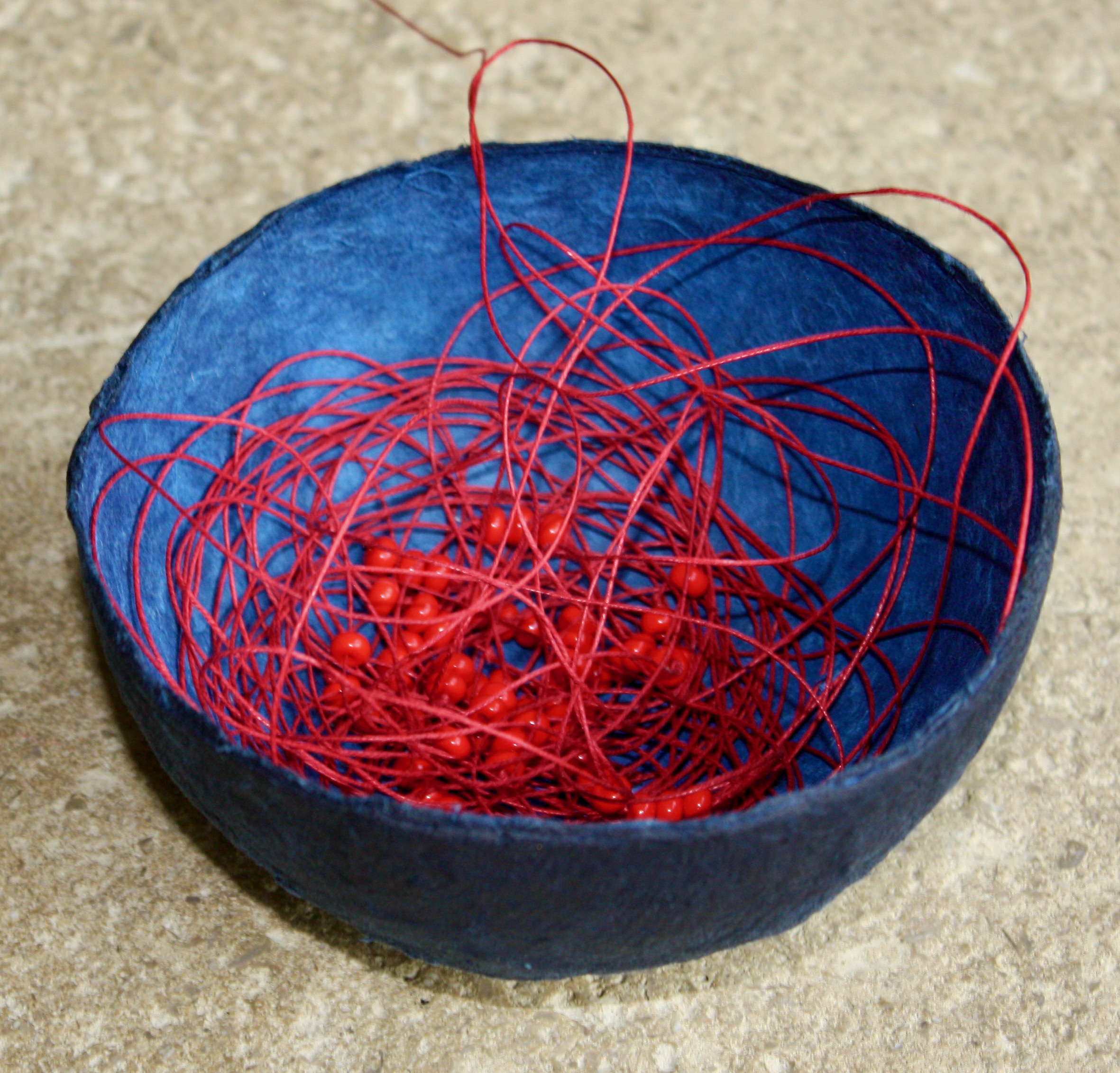
THEME: Connections, Timelessness, Ebb & Flow.
INSPIRATION: Akai-ito – The Red Thread of Fate, a Japanese legend, originating from China: “An invisible red thread connects those who are destined to meet, regardless of time, place or circumstance. The thread may stretch or tangle, but it will never break”.
Sashiko – “little stabs” traditional Japanese running stitch.
THEME: Connections, Timelessness, Ebb & Flow.
THEME:
Tokens: Although admission was anonymous, the parents retained the right to reclaim their child. In practice this was minimal – from 1741 to 1760 only 152 children out of 16,282 were reclaimed, often too late – they had already died. These tokens ranged from ribbons, coins, trinkets, rings, and scraps of fabric to playing cards.
Billets: On Admission, basic information about the child was recorded. A serial number and the date of admission were entered on the billet together with the sex, age and a list of the child’s clothing. These billets were folded into a packet and any token was wrapped within it. These packets were sealed with wax and marked on the outside with the child’s individual serial number, the date of arrival and the sex.
Inspiration: The Foundling Museum, London. Between 1741 and 1760 more than 16,000 babies were left at The Foundling Hospital. Whilst the policy at the time was to give the children new names, to ensure a fresh start in life, the parents were given the opportunity to leave a token to enable the identification of the child, should they ever be in a position to return and reclaim them.
